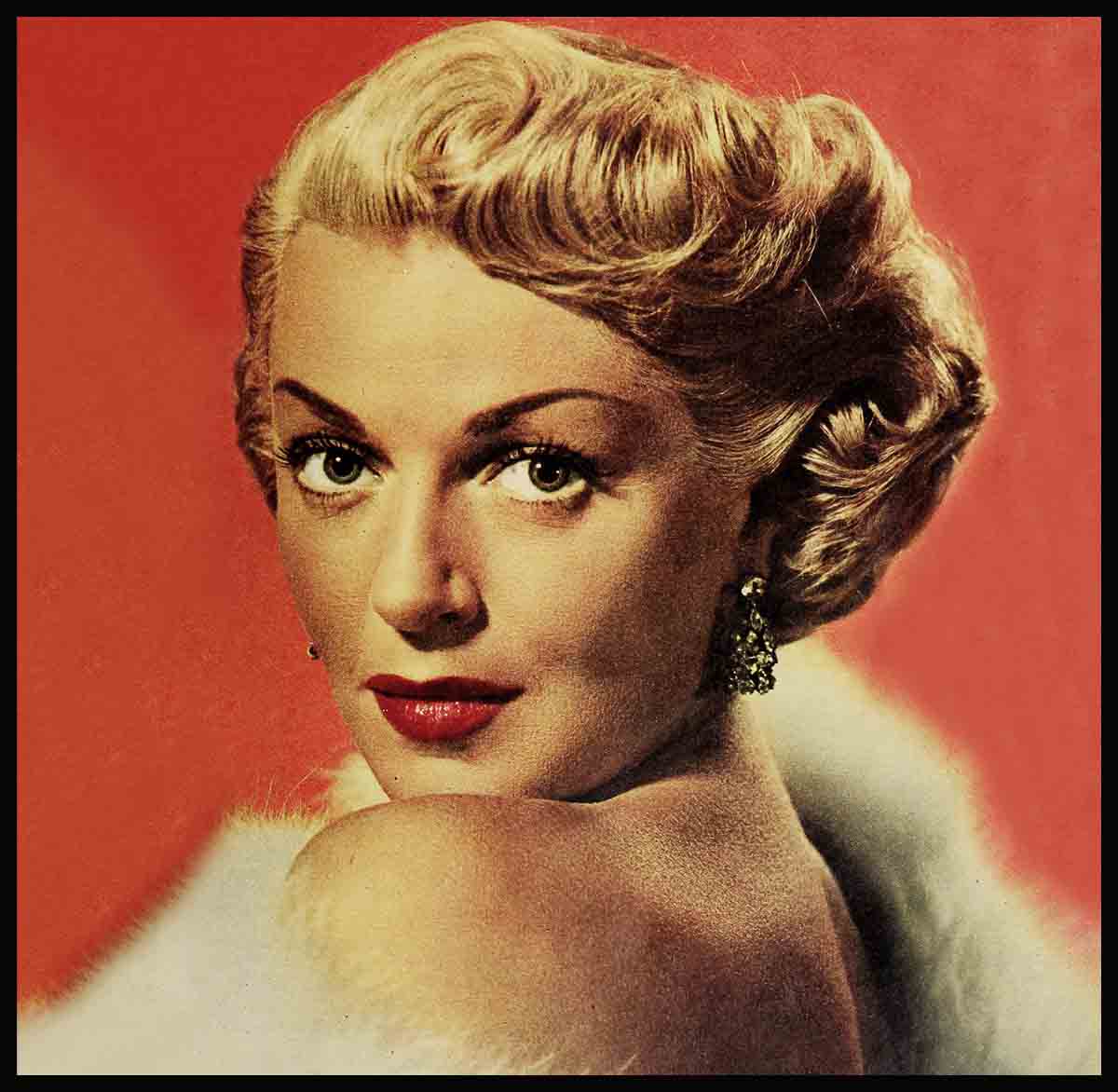
A Report On Lana Turner And Love
Lana Turner sat in a row boat and stared silently across the lake into the thick growth of trees that covered the distant bank. The water chopped busily, agitated by a playful wind, but the swell was gentle and the boat swayed easily in a restful, sedative motion. Lana leaned back, her hands flat on the seat behind her, and stretched her spine in a luxurious, cat-like movement and she looked into the sky where fat white clouds sat content against a field of bright blue. The oars rested in the water, slapping gently at the chop and creaking quietly in the oar locks. It was a day and a place for dreaming and remembering; the occasional chill in the autumn air, telling of summer’s last days, was stimulating, and the whip of the wind in her hair seemed to spark thoughts in Lana Turner’s mind.
This day was truly a day for meditation and for the making of plans and promises. In her room across the lake there was a newspaper. And in the paper there was a story with a Las Vegas, Nevada, dateline which said that Mrs. Fernando Lamas had been granted a divorce from her actor husband, and that Lamas was now free to marry the girl of his choice, Lana Turner, the MGM movie star. Lana sat in the boat and thought about it. All she had to do was row to the shore, walk into a Nevada court, ask for a divorce from her husband, Bob Topping, and then find a justice of the peace and say “I do” with Lamas, the man she was admittedly in love with. That would be the end of a story that had been in the papers a long time, ever since she had started making a film called The Merry Widow with Lamas more than a year before.
That was all it would take—but it was a bigger step than the world knew. And Lana had to think about it—all alone. Away from all disturbances and influences, Lana Turner was making up her mind—and they say she made up her mind to be smart this time. She was in love, but she was going to be smart.
In general appearance Lana Turner is not much different than she was 15 years ago when she made her first movie at Warner Brothers. Her figure, with the help of a little dieting in the past few years, is still as curvy and exciting as it was then. Her face is still the tantalizing thing it used to be, with large dark eyes and a sultry expression, a full mouth and that overall appearance of a pout. In personality she is more reserved, not nearly as vivacious, but she laughs like she used to and cries when she is unhappy. Only in her mind is she really different. A lot has happened. Lana has learned that happiness and success do not walk hand in hand and that love, true love, doesn’t always come to a girl just because she is the toast of the most fabulous town in the world.
Lana learned about men—and love—the Hollywood high-pressure way. Rather reserved, she was not the busiest girl at Hollywood high school in the evenings. As a classmate of hers put it: “She was so doggone beautiful that none of the fellows dared ask her for a date. She had that cool attitude even then—and the guys didn’t know how to cope with her.” Even though one or two lads got close enough to discover there was warmth beneath the chill, Lana never had the warm, hand-holding awakening to romance that is every teen-ager’s birthright. Instead she was plucked from a soda fountain stool, poured into a sweater, and projected life-size on a Hollywood screen.
Every man who watched that screen edged forward in his seat. From the back row came a resounding “WOW!” In a couple of hours the word had spread that the sexiest blonde in town was toiling at Warners—and the chase was on. And these hounds could cope . . . reserve or no reserve.
Any of the fellows who took her out in those early days will tell you that Lana was naive. She dated indiscriminately. She wasn’t interested in the men, but in the places they took her and the times she was having. So she went out with anyone who promised something exciting and different in the way of entertainment. She was to be seen almost nightly at the Trocadero and the other fashionable night spots. One night it would be with a lad who could hardly dig up the price of the evening—and the next it might be a chap old enough to be her father. Lana was a gay one but certainly not romantic.
Artie Shaw was undoubtedly the first real love she ever had. Shaw was, at that time, the king of hot music. He was handsome and easy to be with. He was very literate. At any rate, a date with the clarinet player was filled with the promise of romance and intelligence—and Lana was no different from any other young girl of her age, she wanted Shaw, too. If you ask her today why she married him she will have difficulty explaining it to you, but at the time it seemed to be the thing she wanted most. She eloped on the spur of the moment and when the world woke up to its morning papers, Lana Turner was all over the front pages as the gal who got Shaw.
The marriage didn’t last long. When it broke up as casually as it started, Lana Turner vowed she would never marry again; have more sense if she ever did; and stated that she had learned a lesson about love. Perhaps she thought she had.
As a grass widow Lana Turner lived her role to the hilt. She developed an expression of a mixture of complete concentration and adoration—and she seemed to turn it on every man she met. Her suitors flocked around by the score. There were tall ones, short ones, fat ones and old ones and they changed with the regularity of nightfall. It appeared that Lana was really earnest about staying away from love—except for casual explorations.
The newspapers, though, didn’t believe her. Seldom a week passed by that her name wasn’t linked romantically with one of the eligibles of the movies in the collums. Victor Mature was head man for awhile. This began at first as a publicity romance. Vic was coming ahead fast in the pictures and Lana was in the midst of a big sex build-up by MGM. Soon, though, Lana became more than a prop in the affair. She took a sincere liking to Vic—and then everything went wrong. One night, after a particularly bitter quarrel, she took off for San Francisco. Next morning Mature read headlines in the papers that stated: “Lana Turner To Marry Tony Martin.”
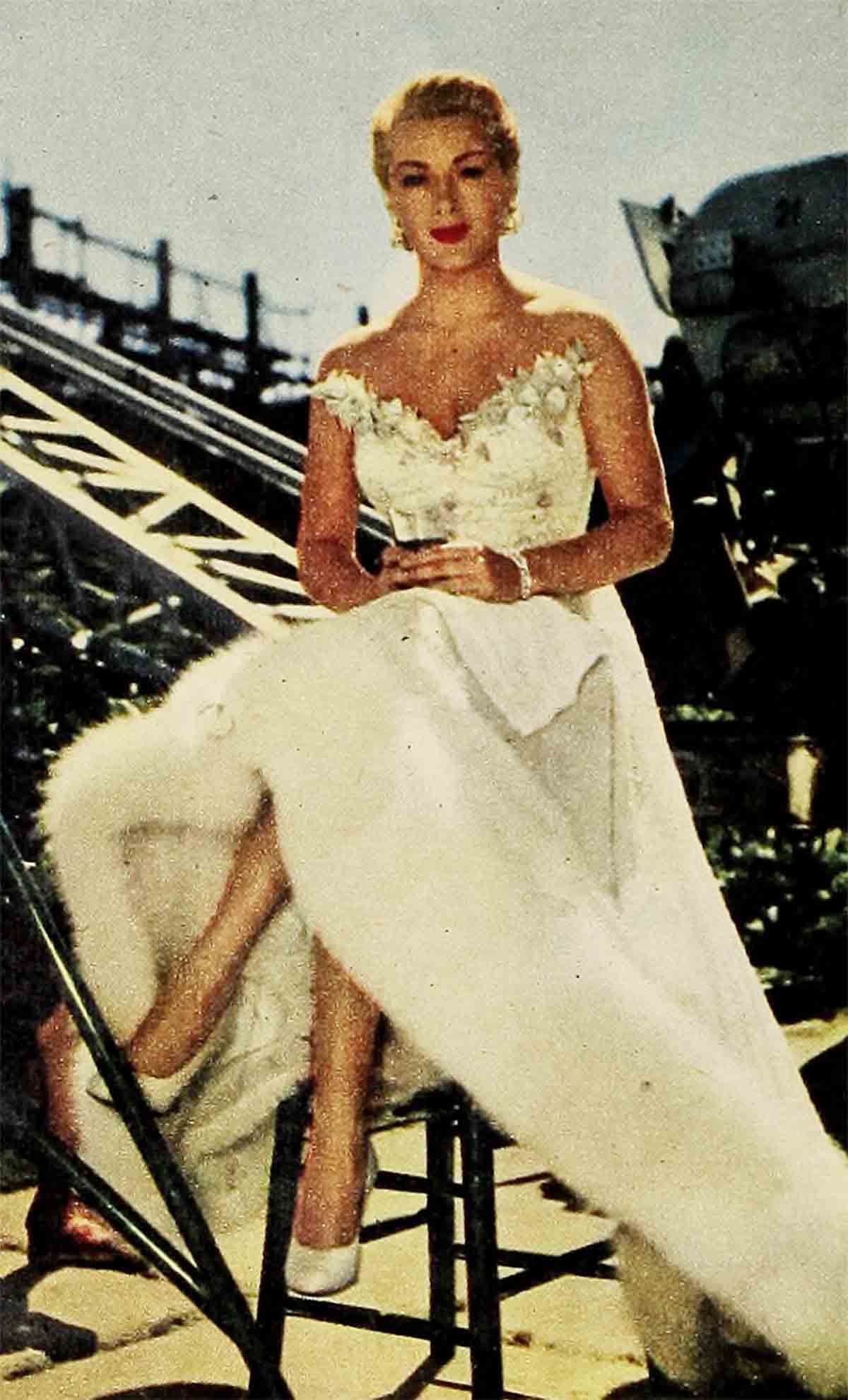
Although this marriage never came off, Tony Martin was also one of Lana’s sincere loves. She was completely captivated by the Martin male beauty and the way he crooned a love song. It is said that she was more jealous of Tony Martin than any man she ever loved. And she certainly clung to his good right arm at every opportunity.
Steve Crane, a Hollywood restaurant owner and erstwhile actor, was Lana Turner’s second husband. Steve showed up in Hollywood out of nowhere and in a very short time, due no doubt to his good looks and quiet manner, became one of the most popular escorts in town. He met Lana at a party and, according to her friends, she fell completely in love with him on sight. Her later actions deny this, but that is the way the story goes. At any rate, before people knew what was happening, she had eloped again.
The early days of Lana’s marriage to Steve Crane were properly idyllic. They lived normally. Fresh from the feverish pace of “bachelorhood.” Lana seemed content to work her eight hours and come home to quiet evenings before a cozy fire. But this, too, vanished one day and the Cranes began to appear more often in public. People began to notice that Lana appeared restless. Steve was taken into the army shortly afterwards and absence didn’t make Lana’s heart grow fonder. A short time after his discharge, Steve Crane became Lana’s second divorcé.
Unlike the more mature Artie Shaw, Steve Crane took the separation from his wife badly. Weeks of ineffectual tries at a reconciliation culminated in Steve driving his car off a cliff one night, in a reported attempt at suicide. That brought Lana around. She went to his hospital room and when he was well enough took him home. Then for a short period she seemed to have recaptured some of the bliss she had known in the first days of their marriage. But this, also, lasted just a few weeks—and Lana left again.
That was when Cheryl, Lana’s daughter, came into the picture. On the verge of getting an annulment, on the grounds that Steve wasn’t divorced from his former wife when she married him, Lana learned she was pregnant. She immediately called the whole thing off, had the baby, and then got a divorce. They say she really tried to be a good wife to Steve, but came to the conclusion that there was no hope. The break-up of this marriage had a very bad effect on her, she mourned a long time before she got back in the social swim.
When she began getting about again, Lana Turner, older and wiser than before, really tried to play the part of the gay bachelor girl with romance, but never marriage, on her mind. She went back to a former beau, lawyer Gregson Bautzer—and had quite a fling with him, if the gossip columns are accurate in their reports. Then she ‘tried the field again. Her passion for Turhan Bey was the talk of the town for awhile. Then it was Rory Calhoun . . . Huntington Hartford . . . Robert Hutton and half a dozen other lesser known swains. Lana was on a merry-go-round.
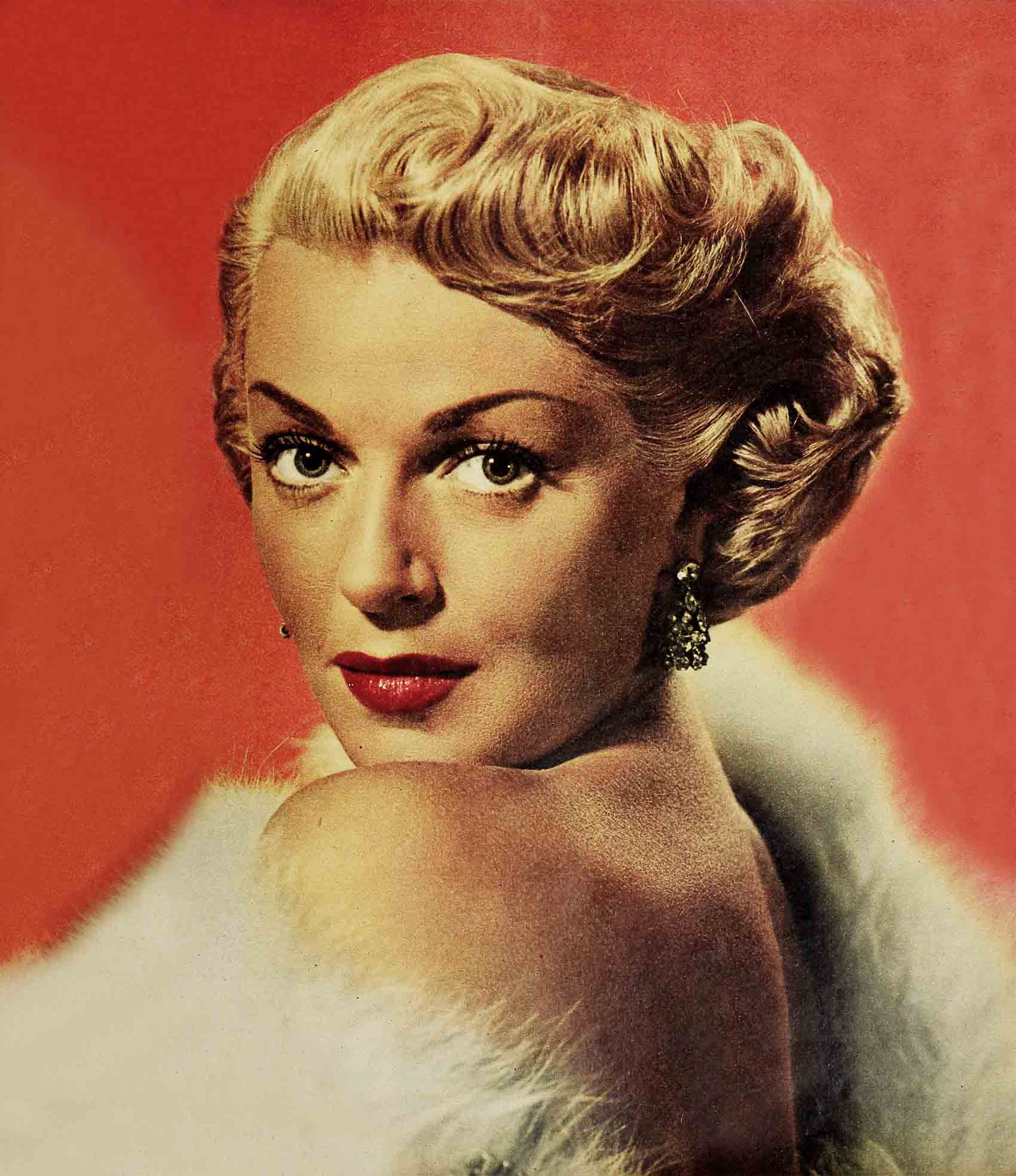
Hollywood would have given you five to one just a few years ago that Lana Turner and Tyrone Power, a new divorcé himself, would marry; become the handsomest couple in Hollywood; and settle down and live happily ever after. They were inseparable. They had eyes only for each other when they appeared in public. In their spare time they were redecorating Ty’s house for their home as soon as they took their vows. But one day Ty met a half-Mexican half-Dutch beauty named Linda Christian. He fell like a crippled Balloon and, so they say, didn’t even tell Lana goodbye. At first she was heartsick, and afterwards furious. But there was nothing she could do about it. She’d been jilted. Lana Turner became Hollywood’s symbol for a broken heart.
Bob Topping, Lana Turner’s third husband, came into the picture at that time. Topping has a reputation for being a playboy. However his vast interests kept him busy away from the movie studios. This made him a different kind of a man as far as Lana Turner was concerned. She was terribly interested. Bob’s courtship was along eastern lines. He had no glamor or handsome face. He just came calling like a business man dating a pretty girl. Lana liked it and dreamed of the future, imagining it would be just the same. They were married in an elaborate ceremony at the home of William Wilkerson, the publisher who had discovered her on the soda fountain stool years before. Lana knew that this time it was for keeps.
Many say that Lana was completely happy with Bob Topping for a long time. Others remind them that Bob stayed in the east for more than a year, keeping her away from pictures, and that when he did come back to Hollywood he didn’t want his wife to work in the movies. They contend this made her miserable. No matter which is true, it became common Hollywood gossip shortly after Lana and Bob Topping moved into their huge Holmby Hills mansion that there was more than the usual amount of discord in the house. Bob, they said, hated Hollywood and found escape from it in the family bar. At any rate, he was never a genial chap around picture people.
For a long time Lana Turner heatedly denied reports that she was not happy, and that her marriage was on the verge of collapse. Topping, now that we think of it, never bothered to deny anything. When they went out in public Lana seemed like a different person. She sat quietly at their table seldom talking to anyone—and when she waved at a friend or exchanged a greeting it was always a chilly thing. The town couldn’t understand it. But Lana understood herself. She was doing everything in her power to save this marriage.
This writer happened to be present at the blow-off party. It was a charity affair at Mocambo. Lana and Bob had a ringside table, because Lana was slated to appear in the show. During the evening nobody saw the Toppings exchange a civil word. For the most part Lana and Bob just sat silently looking at everything but each other. Her heart was in her face that night—and even an amateur observer could tell that she was through. As her friends left they didn’t go up to speak to her. They didn’t want to look in her eyes.
While this is being written, Lana Turner is still a married woman, although it is suspected that at any moment she will apply for her divorcee and marry Fernando Lamas. Actually, the only thing that is holding up the wedding, according to the best informed sources, is the matter of a property settlement with Topping. It seems he is bargaining to trade the jewelry he gave his wife (heirlooms, they say) for the title to the home they lived in. In the meantime Lana has been sitting out the waiting period prior to a divorce application at Lake Tahoe. She has been there long enough. Now all it will take is a few minutes before a judge to get her freedom back.
During this waiting period, Lana has been trying to find Bob Topping, hoping to serve him with a summons that will bring him under the jurisdiction of the Nevada courts. She has told her pals that after 15 years in the movies she is practically broke—and that all she wants from her former husband is the money she paid to maintain their home—and the house itself. But if Topping does not make himself available to her lawyers, or sign a settlement that is approved by the Nevada courts, Lana will have to walk away from him with nothing, not even a roof that she can call her own. That is the reason for the delay.
Fernando Lamas is unlike any man that Lana Turner has ever been in love with before. He is violently Latin. He is more handsome than any of her men—and is, like most Latins, much more attentive than any of the others. However, since he lived in South America, where a woman is not quite on a par with a man in marriage, there is some speculation that he might revert to his native type once the knot is tied. These are the things that Lana Turner has to think about.
At 32, Lana is a changed woman. She is much more proper than she used to be and seems to have tired of the gay life. Although she has been the constant companion of Lamas for nearly a year, they have not been seen in public more than a dozen times. And never in the hot Sunset Strip spots. It is believed that this time Lana really intends to live a sedate life, with home and fire and slippers after a day’s work. She hasn’t lost all of her zest, though. People she works with say she is just as much fun as ever on the set, but not as zany.
Lamas is a mature man, too. He is not much older than Lana but he has an adult approach to life’s problems and is not a playboy or a free spender. Although he has been married, he has not been working at it for a few years—and until he met Lana he had not shown any interest in the Hollywood girls. So fidelity can be chalked up to his credit. He is anxious, they say, to marry just once more and will no doubt keep away from the temptations that make Hollywood marriages such hazardous enterprises.
Lana Turner has thought of all of these things. This time she is going to be sure. Browned and healthy from weeks’ in the open, she has a clear mind and a hopeful heart. She’s had time to go over the mistakes she had made in the past; to look into the reasons why it hadn’t worked with Artie Shaw, Steve Crane, Bob Topping—and why it hadn’t come up marriage with Greg Bautzer, Vic Mature, Ty Power, Bob Hutton or the other men she had been in love with.
Yes, it was a day for thinking and meditation on life and love. creaked and the oars slapped the top of the water as they bounced to the rhythm of the chop on the lake. The sun was bright and the wind fresh and the chill in the air exhilarating.
When Lana Turner reached for the oars and pointed her boat toward the shore and the cabin in the trees, she had it all figured out: No more tries at marriage. This time it would be for keeps. She’d let experience make her an expert at keeping a man happy—and at being happy herself.
THE END
—BY JIM HENAGHAN
It is a quote. MODERN SCREEN MAGAZINE DECEMBER 1952


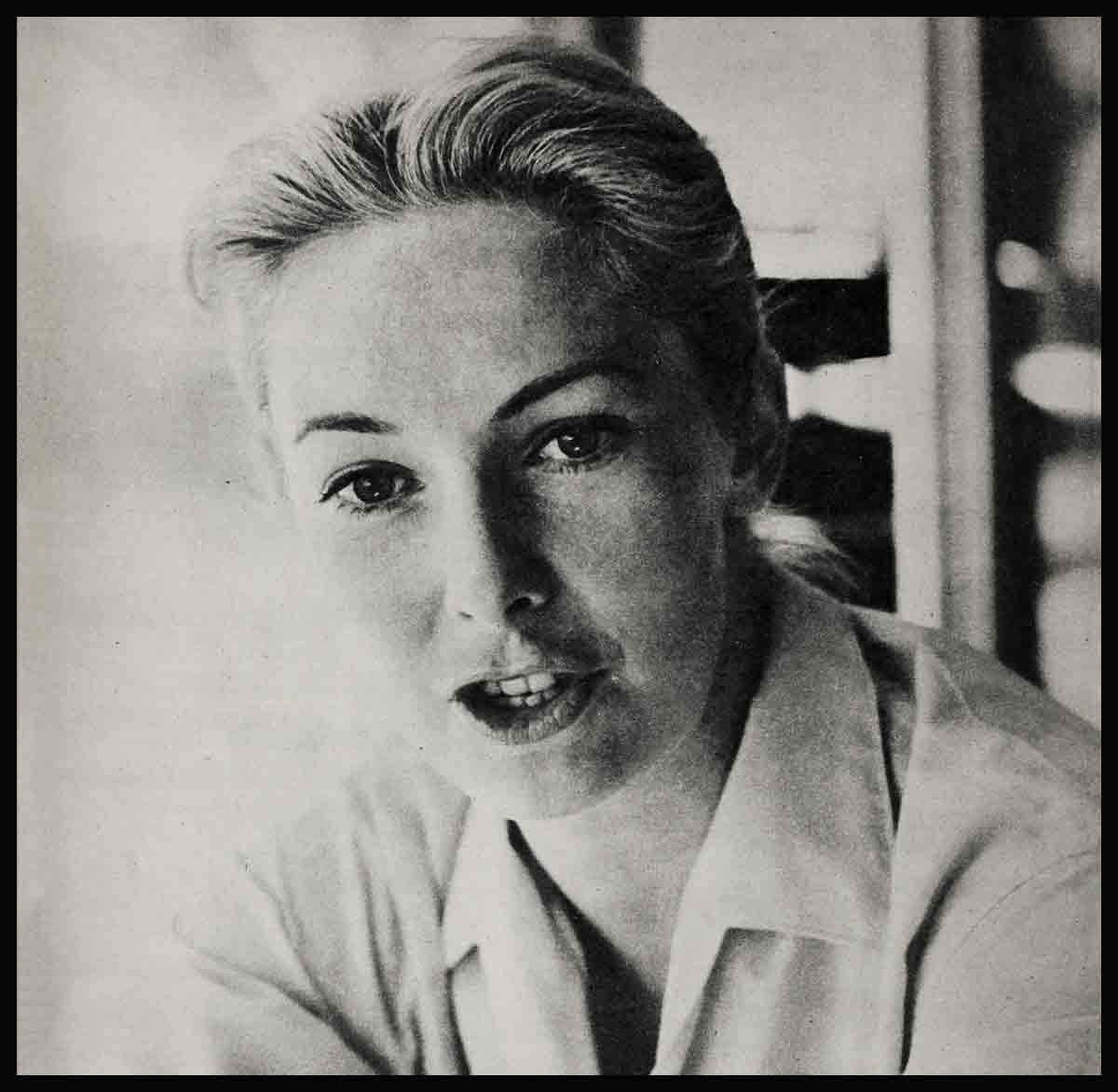

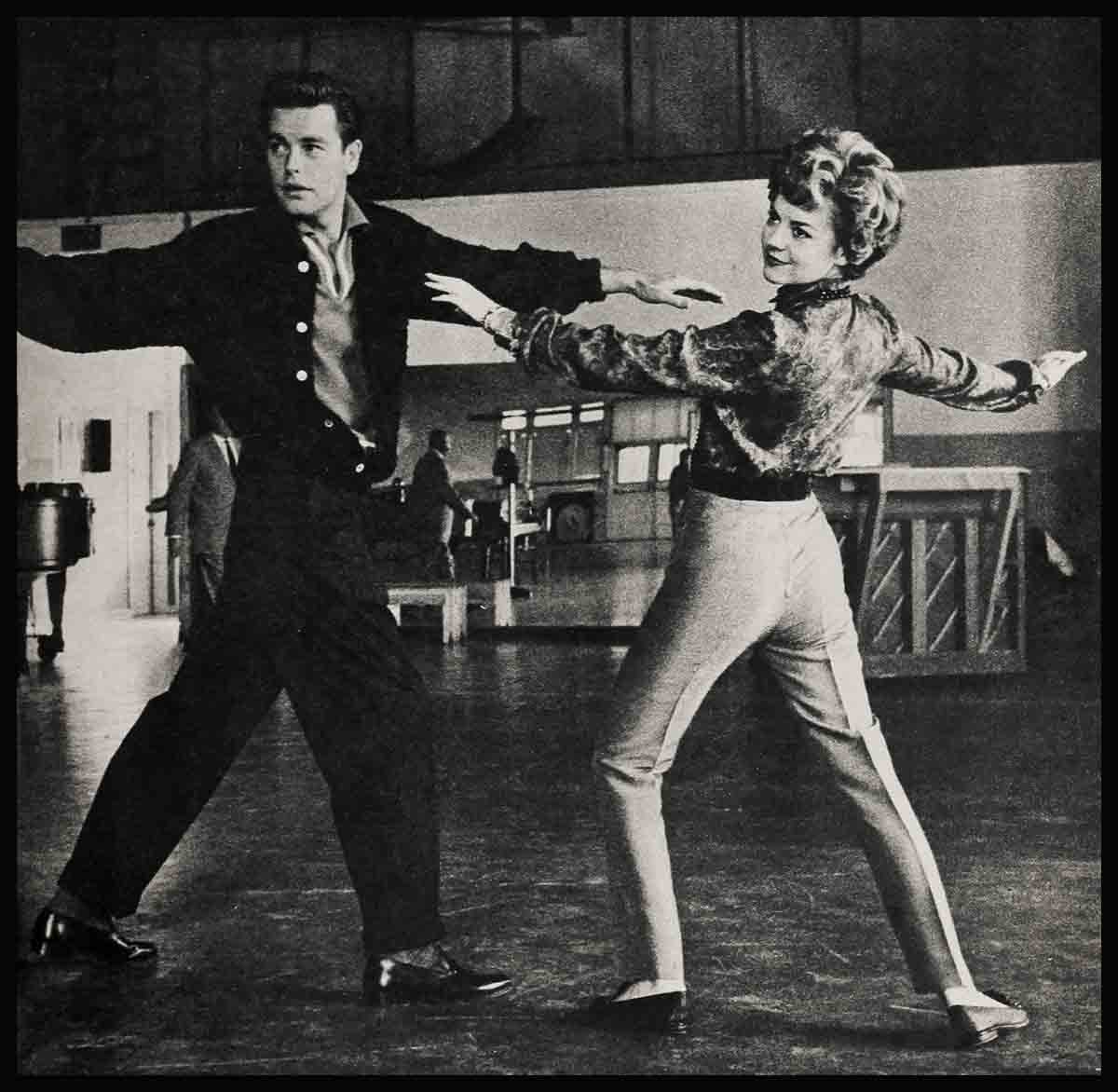
No Comments